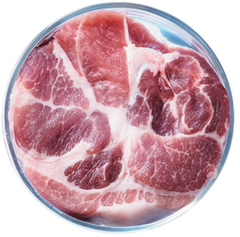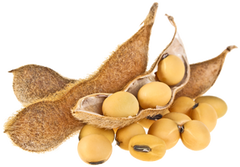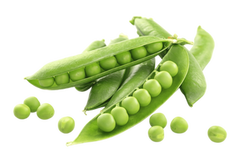Panel discussion on...
Alternative proteins
The nutritional and sustainability benefits of insects as food ingredient
What are the latest/breakthrough innovations and scientific discoveries in the field of alternative proteins, and how do they differ from current options available in the market?
Since June 2021, the first insect ingredient - Tenebrio Molitor worm powder - has been allowed to be used in the European Union as a Novel Food. So far, other companies have received Novel Food approval to place various insect ingredients in the EU market: whole dried insect powder, defatted powder, whole, frozen, and paste insects (1).
Historically, insects have been used as food in other parts of the world, proving themselves as nutritious products. Just like any food product, the nutritional value of insects is variable, mainly due to vast species differences, the stage of the insect's metamorphosis, living conditions, as well as type of processing e.g., drying, frying, boiling. But mostly edible insects, most commonly larvae, are used primarily for their protein.
Insect proteins have high levels of high-quality proteins regarding nutritional value, total protein level, and essential amino acid profile. The protein content of the Yellow mealworm ranges from 63–69 % in dry matter, which is more than conventional meat protein sources, about 15–22 %. Temnebrio Molitor, for example, hashigher amounts (mg/g protein) of Isoleucine, Leucine, and Threonine than egg powder or beef (2). From nutritional and health point of view, the digestibility and metabolised contents of the food are the key aspects, not their contents in the food. According to Ohja et.al, protein efficiency ratios and biological value of cricket (G. assimilis) is comparable or higher to casein (3).
With increasing scientific research and updated Novel Food regulations, it is well-approved that insects are more than welcome in Western diets. Various insect ingredients are becoming more and more accessible. Suppose insect powder added to protein bars or pasta is still new and surprising for most Westerners. Still, insect farmers/ ingredient manufacturers are working on new ingredients to better adapt insects into our food system. Meat alternatives manufacturers will soon be able to use insect-textured protein in plant-base patties, sausages, and minced meats, which helps veggie meat alternatives get the all-important meat-like texture. It looks similar to soya chunks, is light brown, and is available in wet and dry form.
If animal proteins are considered to be of better nutritional value than plant proteins with higher digestibility in the human gastro-intestinal tract (4), adding textured insect protein to plant patty sounds like a must have.
How can we effectively address remaining consumer concerns regarding alternative proteins?
One of the most common barriers to accepting alternative proteins in society is neophobia and habits, which tend to be unhealthy, and cultural assumptions that often prevent nutrient-rich foods from being seen as acceptable in society.
If we are talking about insects, a significant factor is “disgust” because insects are considered pests. Knowing that based on various studies, it is not recommended to use visible insects in the products but to present the product in a form familiar to Westerners, for example, the dried insect powder in bread, cookies, and meat alternatives (5).
Indeed, a significant role for consumer addressing is education, including nutrition science lectures with adjusted content in children's educational institutions. Today's social networks are a great way to invite the population to follow various influencers who speak reasonably and are knowledgeable about alternative proteins.
Consumer trust in the product manufacturer and brand plays a significant role in choosing a product, meaning that alternative product manufacturers should offer science-based recipe technologies and trustable, well-planned marketing communications.
It was found that more significant opportunities, better nutrition knowledge, and awareness about edible insects increase consumer acceptability (6).
Are plant proteins more sustainable than dairy, fish or meat proteins and how to accurately measure this?
Insects as food ingredients are considered sustainable mainly due to four factors: they consume less feed, use less space and water, and produce a tiny fraction of gas emissions.
Insects have a high feed conversion ratio; they efficiently convert feed into biomass. For example, to produce 1 kg of house crickets, 1.7 kg of feed is needed, while 1 kg of chicken requires 2.5 kg of feed, and cattle 10 kg of feed per 1 kg of live weight. Insects are cold-blooded and do not consume energy and food to maintain their body temperature.
In addition, the effectiveness of insects is enhanced by the fact that a large part of their general live weight is edible - insects are edible whole, but unlike conventional animals, muscle tissue is most often consumed, and this creates additional energy value and also economic value.
Regarding the use of space, insects in Europe are grown in modern vertical farms, which take up less space than conventional livestock farming. For every 1 ha of land required to produce mealworm protein, 2.5 ha would be required to produce a similar quantity of milk protein, 2–3.5 ha would be required to produce a similar quantity of pork or chicken protein, and 10 ha would be required to produce a similar quantity of beef protein. Therefore, mealworms are a more environmentally friendly source of animal protein than milk, chicken, pork, and beef (7).
According to various studies it is estimated that producing 1 kg of animal protein requires 5–20 times more water than generating 1 kg of grain protein. If we look at insects, they consume less water than conventional farm animals, and I want to emphasize mealworms, which take water only from the vegetables added to the feed. The use of biowaste in insect breeding is an excellent point.
Of course, in order to evaluate the overall sustainability of the product and its impact on the environment, a detailed life cycle analysis must be carried out in a specific company, taking into account other stages of the product's production and their cooperation partners, for example, how sustainable is the insect feed or farm maintenance.
Panelists
References and notes
- COMMISSION IMPLEMENTING REGULATION: (EU) 2021/1975 - (EU) 2021/882 - (EU) 2022/169 - (EU) 2022/188 - (EU) 2023/5 - (EU) 2023/58
- https://doi.org/10.1016/j.foodchem.2019.126022
- https://doi.org/10.1016/j.cofs.2021.08.003
- https://doi.org/10.1016/j.tifs.2022.02.021
- https://doi.org/10.3390/ijerph17072427
- https://doi.org/10.1016/j.appet.2021.105832
- https://library.wur.nl/WebQuery/wurpubs/fulltext/258042



















